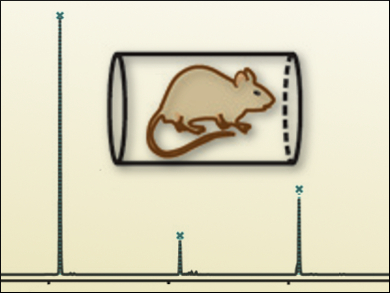The in vivo properties of drugs have to be investigated by using animal models before they enter the clinical phase. Pharmacokinetic (PK) studies are carried out to determine the concentrations and degradation products of each compound in tissue. This approach requires the sacrifice of rats and mice, and thus other techniques are needed that have an emphasis on animal welfare as well as saving time and costs.
Renato Zenobi, ETH Zurich, Switzerland, and colleagues have come up with a noninvasive method to study drug PK profiles. They use secondary electrospray ionization high-resolution mass spectrometry to study mouse breath. After drug administration, the mouse was placed in an acrylic chamber that was flushed with a constant flow of air. The air was then analyzed using mass spectrometry.
The team studied drugs such as ketamine and its main metabolites, which could all be detected by using the breath-analysis technique. The concentration distributions obtained and the linear correlation of the maximum signal intensity with injected concentration were found to be consistent with the values measured in plasma. This noninvasive technique provides real-time pharmacokinetic data from a single dose per mouse; it is precise, quick, and does not require animals to be sacrificed.
- Drug Pharmacokinetics Determined by Real-Time Analysis of Mouse Breath,
Xue Li, Pablo Martinez-Lozano Sinues, Robert Dallmann, Lukas Bregy, Maija Hollmén, Steven Proulx, Steven A. Brown, Michael Detmar, Malcolm Kohler, Renato Zenobi,
Angew. Chem. Int. Ed. 2015, 54, 7815–7818.
DOI: 10.1002/anie.201503312




